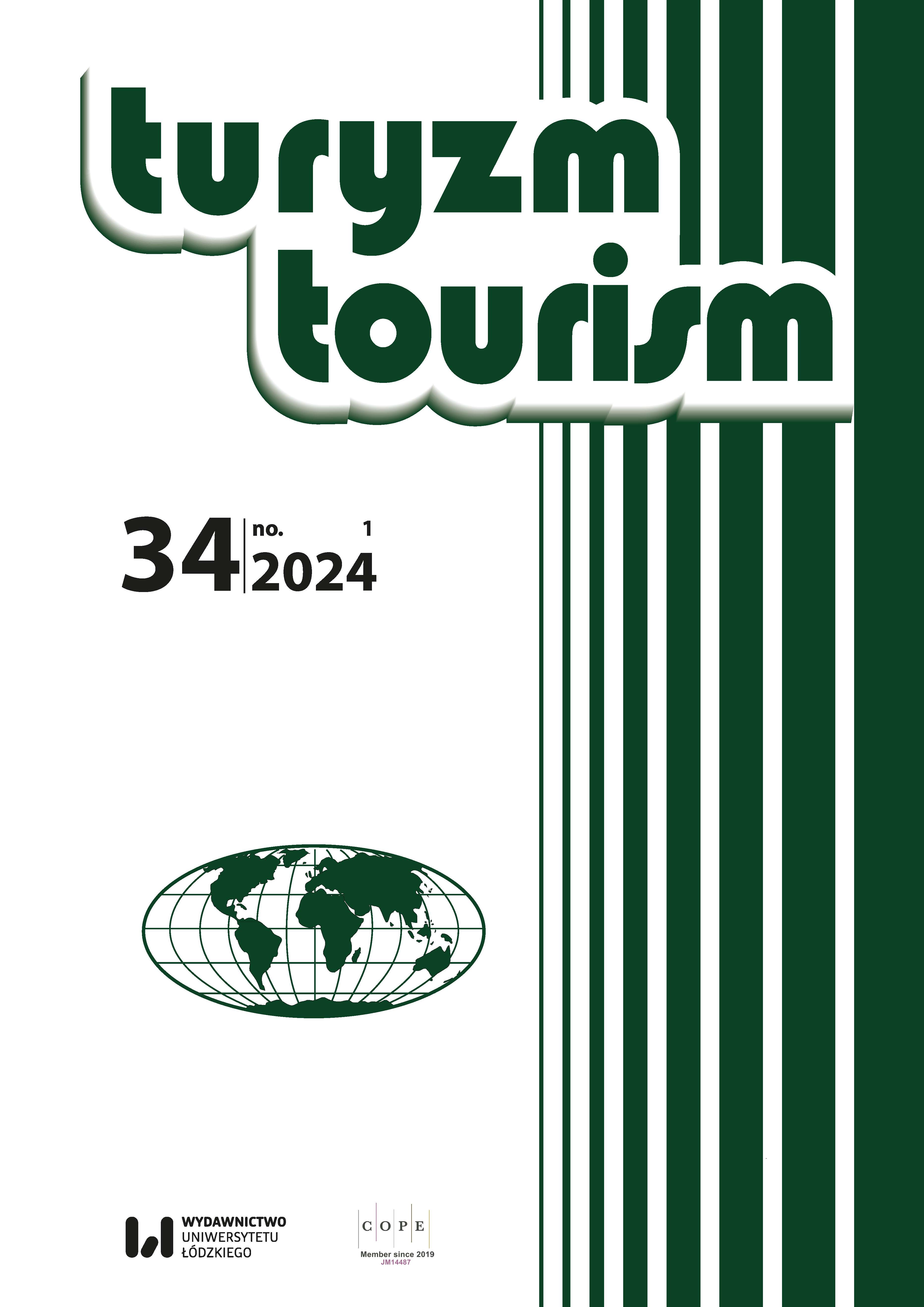International retirement migration for Japanese retirees: Motivational push-pull factors and behavioral phenomena towards cultural assimilation
DOI:
https://doi.org/10.18778/0867-5856.34.1.07Keywords:
international migration, Japanese retirees, push and pull factors, cultural assimilationAbstract
This article examines push and pull factors for Japanese retirees in Thailand as part of international retirement migration (IRM). Additionally, it studies levels of social integration, subjective wellbeing, life satisfaction, cultural assimilation and factors that hinder it. It examines the moderating and mediating effect of the relationship between independent and dependent variables. A quantitative method using a questionnaire was used and found that economic, health and social factors are significant in influencing retirees’ push and pull motivations. As for social integration, subjective well-being, life satisfaction and cultural assimilation, there is positive feedback from retirees. Factors that hinder cultural assimilation are language barriers and cultural differences. The results show a positive and strong association between language acquisition and social integration, between social integration and cultural assimilation, and between attitudes and cultural assimilation. There is a moderating effect between language acquisition and cultural assimilation. The results also show that there is no mediating effect for local support on the relationship between attitudes and social integration.
Downloads
References
Abellán Garcia, A. (1993). La decisión de emigrar en las personas de edad [The decision to migrate among elderly people]. Estudios Geográficos, 54(210), 5–17. https://doi.org/10.3989/egeogr.1993.i210.5
Google Scholar
DOI: https://doi.org/10.3989/egeogr.1993.i210.5
Angelini, V., Casi, L., & Corazzini, L. (2015). Life satisfaction of immigrants: Does cultural assimilation matter? Journal of Population Economics, 28, 817–844. https://doi.org/10.1007/s00148-0150552-1
Google Scholar
DOI: https://doi.org/10.1007/s00148-015-0552-1
Balkir, C., & Kirkulak, B. (2009). Turkey, the new destination for international retirement migration. In H. Fassmann, M. Haller & D. Lane (Eds.), Migration and mobility in Europe (pp. 123–143). Edward Elgar. https://doi.org/10.4337/9781849802017.00015
Google Scholar
DOI: https://doi.org/10.4337/9781849802017.00015
Banks, S.P. (2004). Identity narratives by American and Canadian retirees in Mexico. Journal of Cross-Cultural Gerontology, 19, 361–381. https://doi.org/10.1023/B:JCCG.0000044689.63820.5c
Google Scholar
DOI: https://doi.org/10.1023/B:JCCG.0000044689.63820.5c
Barker, S., & Härtel, C.E.J. (2004). Intercultural service encounters: An exploratory study of customer experiences. Cross Cultural Management: An International Journal, 11(1), 3–14. https://doi.org/10.1108/13527600410797710
Google Scholar
DOI: https://doi.org/10.1108/13527600410797710
Bryman, A. (2012). Social research methods. Oxford University Press.
Google Scholar
D.M. (2014, March 25). The incredible shrinking country. The Economist. https://www.economist.com/banyan/2014/03/25/theincredible-shrinking-country
Google Scholar
Duangkaew, S. (2019). Cross cultural interaction of Japanese retirees through clubs in Thailand. International Journal of Crime, Law and Social Issues, 6(2), 75–90. https://doi.org/10.2139/ssrn.3546351
Google Scholar
DOI: https://doi.org/10.2139/ssrn.3546351
Emerson, R.M. (1976). Social exchange theory. Annual Review of Sociology, 2, 335–362. https://doi.org/10.1146/annurev.so.02.080176.002003
Google Scholar
DOI: https://doi.org/10.1146/annurev.so.02.080176.002003
Ferguson, C. (2008). Expert group meeting: Promoting social integration: Helsinki, Finland 8–10 July 2008 [Background paper for discussion]. United Nations Department of Economic and Social Affairs. https://www.un.org/esa/socdev/social/meetings/egm6_social_integration/documents/backgroundpaper_Clare_Ferguson.pdf
Google Scholar
Gustafson, P. (2008). Transnationalism in retirement migration: The case of North European retirees in Spain. Ethnic and Racial Studies, 31(3), 451–475. https://doi.org/10.1080/01419870701492000
Google Scholar
DOI: https://doi.org/10.1080/01419870701492000
Haas, W.H., & Serow, W.J. (1993). Amenity retirement migration process: A model and preliminary evidence. The Gerontologist, 33(2), 212–220. https://doi.org/10.1093/geront/33.2.212
Google Scholar
DOI: https://doi.org/10.1093/geront/33.2.212
Hall, C.M., & Müller, D.K. (2004). Tourism, mobility, and second homes: Between elite landscape and common ground. Channel View Publications.
Google Scholar
DOI: https://doi.org/10.21832/9781873150825
Hongsranagon, P. (2005). Advisory facilities for long-stay Japanese senior travellers in Chiangmai. Manusya: Journal of Humanities, 8(2), 58–66. https://doi.org/10.1163/26659077-00802005
Google Scholar
DOI: https://doi.org/10.1163/26659077-00802005
Howard, R.W. (2008). Western retirees in Thailand: Motives, experiences, wellbeing, assimilation and future needs. Ageing & Society, 28(2), 145–163. https://doi.org/10.1017/S0144686X07006290
Google Scholar
DOI: https://doi.org/10.1017/S0144686X07006290
Japan population to shrink by a third by 2060. (2012, January 30). The Guardian. https://www.theguardian.com/world/2012/jan/30/japan-population-shrink-third
Google Scholar
King, R., Warnes, A.M., & Williams, A.M. (1998). International retirement migration in Europe. International Journal of Population Geography, 4(2), 91–111. https://doi.org/10.1002/(SICI)1099-1220(199806)4:2<91::AID-IJPG97>3.0.CO;2-S
Google Scholar
DOI: https://doi.org/10.1002/(SICI)1099-1220(199806)4:2<91::AID-IJPG97>3.0.CO;2-S
Krumm, H.-J., & Plutzar, V. (2008). Tailoring language provision and requirements to the needs and capacities of adult migrants. Council of Europe. https://rm.coe.int/16802fc1c8
Google Scholar
Lee, C.-K., & Back, K.-J. (2006). Examining structural relationships among perceived impact, benefit, and support for casino development based on 4 year longitudinal data. Tourism Management, 27(3), 466–480. https://doi.org/10.1016/j.tourman.2004.11.009
Google Scholar
DOI: https://doi.org/10.1016/j.tourman.2004.11.009
Lee, E.S. (1966). A theory of migration. Demography, 3(1), 47–57. https://doi.org/10.2307/2060063
Google Scholar
DOI: https://doi.org/10.2307/2060063
Lipkina, O. (2013). Motives for Russian second home ownership in Finland. Scandinavian Journal of Hospitality and Tourism, 13(4), 299–316. https://doi.org/10.1080/15022250.2013.863039
Google Scholar
DOI: https://doi.org/10.1080/15022250.2013.863039
Long Stay Foundation. (2018, April 2). [2018 Top 10 “Long stay preferred countries/regions 2017”announced] [in Japanese]. https://www.longstay.or.jp/releaselist/entry-3023.html
Google Scholar
Marjavaara, R. (2008). Second home tourism: The root to displacement in Sweden? [Doctoral thesis, Umea University, Department of Social and Economic Geography]. DiVa Digitala Vetenskapliga Arkivet. http://www.diva-portal.org/smash/record.jsf?pid=diva2:141659
Google Scholar
Mason, P.A. (2002). Sunset lives: British retirement migration to the Mediterranean. By Russell King, Tony Warnes and Allan Williams. Berg Publisher (70 Washington Square, New York NY 10012, USA) 2000, xii+235 pp, $19.50 Pbk. ISBN 1-85973-362-X [Book review]. Annals of Tourism Research, 29(2), 579–580. https://doi.org/10.1016/S0160-7383(01)00063-9
Google Scholar
DOI: https://doi.org/10.1016/S0160-7383(01)00063-9
McIntire, M. (2014, June 3). How to overcome language and cultural barriers in the workplace [Post]. LinkedIn. https://www.linkedin.com/pulse/20140603143206-20499125-how-to-overcomelanguage-and-cultural-barriers-in-the-workplace
Google Scholar
Ministry of Foreign Affairs of Japan. (2022). Japan-Thailand relations (basic data). https://www.mofa.go.jp/region/asia-paci/thailand/data.html
Google Scholar
Mukherjee, T., &Bhal, K.T. (2017). Understanding promotional service interactions through social exchange theory of affect. Journal of Promotion Management, 23(5), 689–707. https://doi.org/10.1080/10496491.2017.1297985
Google Scholar
DOI: https://doi.org/10.1080/10496491.2017.1297985
Mukherji, J. (2005). Is cultural assimilation related to environmental attitudes and behaviors? In G. Menon & A.R. Rao (Eds.), NA – Advances in Consumer Research: Vol. 32 (pp. 415–421). Association for Consumer Research. https://www.tcrwebsite.org/volumes/9111/volumes/v32/NA-32
Google Scholar
Müller, D.K. (2006). The attractiveness of second home areas in Sweden: A quantitative analysis. Current Issues in Tourism, 9(4–5), 335–350. https://doi.org/10.2167/cit269.0
Google Scholar
DOI: https://doi.org/10.2167/cit269.0
Müller, D.K. (2011). The internationalization of rural municipalities: Norwegian second home owners in northern Bohuslän, Sweden. Tourism Planning & Development, 8(4), 433–445. https://doi.org/10.1080/21568316.2011.605384
Google Scholar
DOI: https://doi.org/10.1080/21568316.2011.605384
Nouza, M., Ólafsdóttir, R., & Sæþórsdóttir, A.D. (2018). Motives and behaviour of second home owners in Iceland reflected by place attachment. Current Issues in Tourism, 21(2), 225–242. https://doi.org/10.1080/13683500.2015.1072139
Google Scholar
DOI: https://doi.org/10.1080/13683500.2015.1072139
Ono, M. (2008). Long-stay tourism and international retirement migration: Japanese retirees in Malaysia. Transnational Migration in East Asia Senri Ethnological Reports, 77, 151–162. https://doi.org/10.15021/00001277
Google Scholar
Ono, M. (2010). Long-stay tourism: Elderly Japanese tourists in the Cameron Highlands, Malaysia. Senri Ethnological Studies, 76, 95–110. https://doi.org/10.15021/00002545
Google Scholar
Opačić, V.T. (2009). Recent characteristics of the second home phenomenon in the Croatian littoral. Hrvatski geografski glasnik / Croatian Geographical Bulletin, 71(1), 33–64. https://doi.org/10.21861/HGG.2009.71.01.03
Google Scholar
DOI: https://doi.org/10.21861/HGG.2009.71.01.03
O’Reilly, K. (2000). The British on the Costa Del Sol: Transnational identities and local communities. Routledge.
Google Scholar
O’Reilly, K.B., & Benson, M. (2009). Lifestyle migration: Escaping to the good life? In M. Benson & K. O’Reilly (Eds.), Lifestyle migration: Expectations, aspirations and experiences (pp. 1–13). Routledge.
Google Scholar
Rodriguez, V. (2001). Tourism as a recruiting post for retirement migration. Tourism Geographies: An International Journal of Tourism Space, Place and Environment, 3(1), 52–63. https://doi.org/10.1080/14616680010008702
Google Scholar
DOI: https://doi.org/10.1080/14616680010008702
Schiamberg, L.B., & McKinney, K.G. (2003). Factors influencing expectations to move or age in place at retirement among 40- to 65-year-olds. Journal of Applied Gerontology, 22(1), 19–41. https://doi.org/10.1177/0733464802250043
Google Scholar
DOI: https://doi.org/10.1177/0733464802250043
Siew, R. (2017, September 22). Making Southeast Asia your second home. The ASEAN Post. https://theaseanpost.com/article/makingsoutheast-asia-your-second-home
Google Scholar
Toyota, M., & Xiang, B. (2012). The emerging transnational “retirement industry” in Southeast Asia. International Journal of Sociology and Social Policy, 32(11/12), 708–719. https://doi.org/10.1108/01443331211280737
Google Scholar
DOI: https://doi.org/10.1108/01443331211280737
United Nations, Department of Economic and Social Affairs, Population Division. (2022). World population prospects 2022. https://population.un.org/wpp/Download/Standard/Population/
Google Scholar
Vanhove, N. (2005). Tourism demand. In N. Vanhove (Ed.), Economics of tourism destinations (pp. 50–74). Elsevier. https://doi.org/10.1016/B978-0-7506-6637-4.50007-7
Google Scholar
DOI: https://doi.org/10.1016/B978-0-7506-6637-4.50007-7
Visser, G. (2006). South Africa has second homes too! An exploration of the unexplored. Current Issues in Tourism, 9(4–5), 351–383. https://doi.org/10.2167/cit266.0
Google Scholar
DOI: https://doi.org/10.2167/cit266.0
Wang, J., & Kim, T.-Y. (2013). Proactive socialization behavior in China: The mediating role of perceived insider status and the moderating role of supervisors’ traditionality. Journal of Organizational Behavior, 34(3), 389–406. https://doi.org/10.1002/job.1811
Google Scholar
DOI: https://doi.org/10.1002/job.1811
Warnes, A.M., & Williams, A. (2006). Older migrants in Europe: A new focus for migration studies. Journal of Ethnic and Migration Studies, 32(8), 1257–1281. https://doi.org/10.1080/13691830600927617
Google Scholar
DOI: https://doi.org/10.1080/13691830600927617
Warnes, T.(A.M.). (2009). International retirement migration. In P. Uhlenberg (Ed.), International handbook of population aging (pp. 341–363). Springer. https://doi.org/10.1007/978-1-40208356-3_15
Google Scholar
DOI: https://doi.org/10.1007/978-1-4020-8356-3_15
Williams, A.M., King, R., Warnes, A., & Patterson, G. (2000). Tourism and international retirement migration: New forms of an old relationship in southern Europe. Tourism Geographies: An International Journal of Tourism Space, Place and Environment, 2(1), 28–49. https://doi.org/10.1080/146166800363439
Google Scholar
DOI: https://doi.org/10.1080/146166800363439
Wiseman, R.F. (1980). Why older people move: Theoretical issues. Research on Aging, 2(2), 141–154. https://doi.org/10.1177/016402758022003
Google Scholar
DOI: https://doi.org/10.1177/016402758022003
Wong, K.M., & Musa, G. (2014). Retirement motivation among “Malaysia my second home” participants. Tourism Management, 40, 141–154. https://doi.org/10.1016/j.tourman.2013.06.002
Google Scholar
DOI: https://doi.org/10.1016/j.tourman.2013.06.002
Downloads
Published
How to Cite
Issue
Section
License

This work is licensed under a Creative Commons Attribution-NonCommercial-NoDerivatives 4.0 International License.










